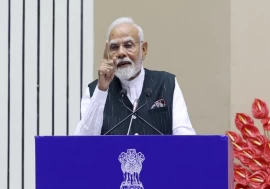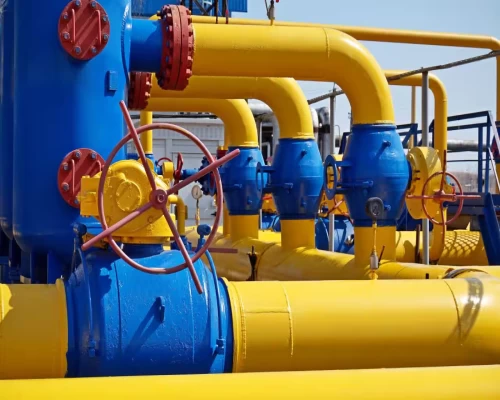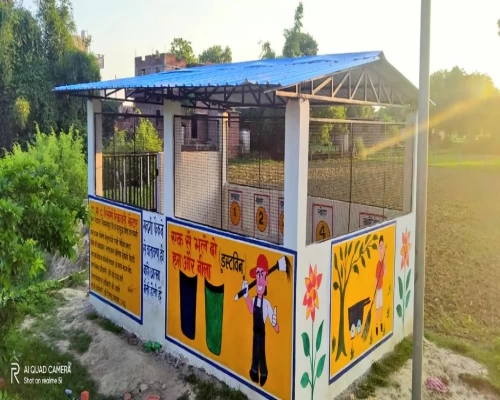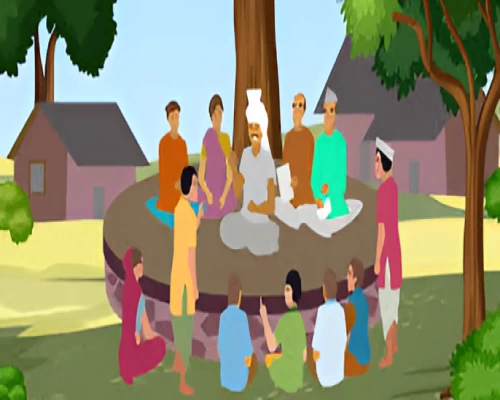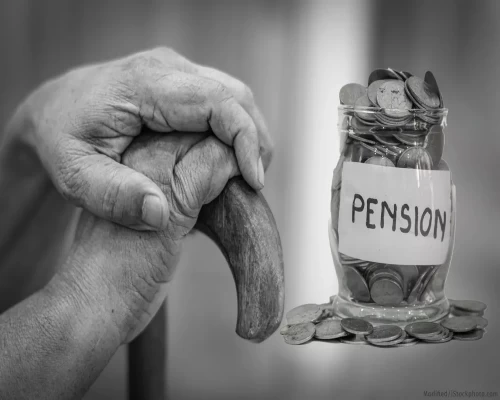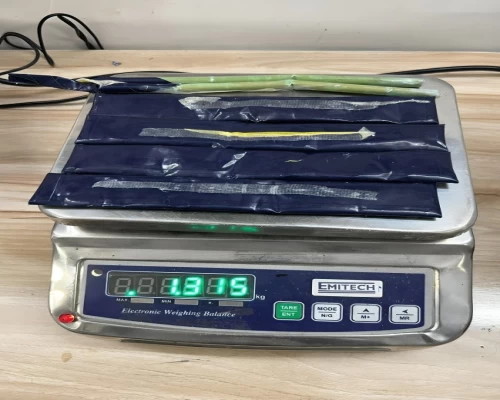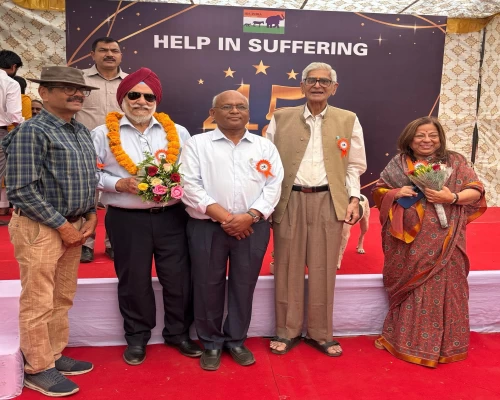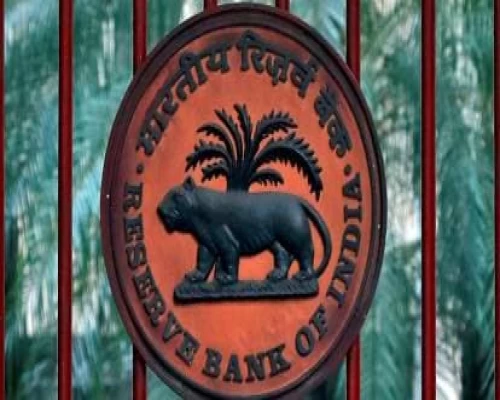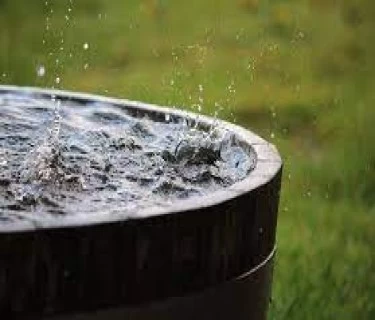
New Delhi: Jal Shakti Abhiyan-Catch the Rain Campaign-2022 was launched by the President of India on 29th March this year. This is the third year that the country is, in mission mode, organizing a Jan Andolan to conserve rain water and recharge ground water. Led and inspired by the Prime Minister of India Shri Narendra Modi, the Jal Shakti Abhiyan was launched for the first time in the year 2019 with the vision to involve everybody in preparing for the rains, so that we can store and use as much of the rain water as possible and replenish our groundwater reserves.
Ground water is sometimes called the invisible resource. Everybody uses it. It is mostly free, available to those with access and the means to extract it. It sustains critical ecosystems, such as lakes, wetlands and woods. India is the largest user of groundwater in the world, using more than a quarter of the available global resources. Ground water has played an important role in ensuring the food security of the country for several decades. It was a major driver in ensuring the success of the ‘Green Revolution’ through millions of energized tube wells. This finite resource currently caters to more than 60 per cent of irrigated agriculture, 85 percent of rural drinking water supplies and more than 50 per cent of the urban water supplies.
Increasing and unsustainable extraction of ground water has resulted in significant depletion of this valuable resource. From large-scale loss of livelihoods to health issues related to lack of availability of safe drinking water to people migrating, the impact of water scarcity is severe. This is compounded by climate change, which makes precipitation patterns erratic and therefore affects the predictability of ground water recharge. At present, ground water resources in nearly one-third of the country are under different levels of stress.
Small and marginal farmers, women and weaker sections of the society, disproportionately bear the brunt of ground water depletion and contamination. To address this problem, the Government of India, inspired by the Prime Minister, launched the Jal Shakti Abhiyan (JSA) in 2019. The Prime Minister himself wrote to all the Chief Ministers of all States and Union Territories and also all the Panchayat leaders, to give leadership to the campaign in their respective jurisdictions. This was a time-bound, mission mode water conservation campaign, implemented in the July - November 2019 period in 1,592 blocks of 256 water-stressed districts of the country. These blocks fell under the critical or overexploited groundwater category, where groundwater was being extracted faster than it could be replenished.
JSA was a collaborative effort of various ministries of the Government of India and State Governments, coordinated by the Department of Drinking Water and Sanitation, Ministry of Jal Shakti. During the campaign, officers, groundwater experts and scientists from the Government of India worked together with the States and district officials in India’s most water-stressed districts for water conservation and water resource management by focusing on accelerated implementation of five targeted interventions. The JSA aimed at making water conservation a Jan-Andolan through extensive communication and involvement of communities.
JSA focused on five aspects-water conservation and rainwater harvesting, renovation of traditional and other water bodies, reuse of water and recharging of structures, watershed development, and intensive afforestation. Besides, special interventions included development of Block Water Conservation Plans and District Water Conservation Plans, Krishi Vigyan Kendra Melas, Urban Wastewater Reuse and 3D contour mapping of all villages. States used resources from multiple sources. It was stipulated that at least 60 per cent of MGNREGA funds should be spent on natural resource management activities, mainly water conservation. Fifteenth finance Commission Grants, CAMPA funds, CSR resources were all utilized to fund these activities.
The combined efforts of all the stakeholders in 2019, achieved the creation of 2.73 lakh water conservation and rainwater harvesting structures, renovation of 45,000 water bodies/ tanks, creation of 1.43 lakh reuse and recharge structures, 1.59 lakh watershed development related works, 12.36 crore trees planted and preparation of 1372 block water conservation plans. Beyond these numbers, the campaign created a strong environment for bringing together all stakeholders working on water recharge and management. Many States did more than was originally planned. Some States extended the campaign to all their districts, going beyond the water stressed districts that were selected initially.
The year 2020 was the first year that the country was responding to the COVID pandemic. It was, therefore, not possible to implement a full scale Jan-Andolan that year. The Ministry of Jal Shakti, therefore, worked with large landowners like educational institutions, Defence establishments to increase rain water harvesting. In the year 2021, encouraged by the response in 2019, the scope of JSA 2019 was expanded and the ‘Jal Shakti Abhiyan: Catch The Rain’ (JSA: CTR) campaign was launched in all districts (rural as well as urban) in the country. JSA: CTR was implemented from 22nd March 2021 to 30th November 2021 with the theme ‘Catch the rain, where it falls, when it falls.”
During the JSA: CTR campaign from 22 March 2021 to 30 November 2021, about 42 lakh water related works were taken up, in addition to 36 crore trees planted. This includes creation/ maintenance of 14.76 lakhs water conservation and RWH structures, renovation of 2.78 lakh traditional water bodies, creation/maintenance of 7.34 lakh reuse and recharge structures and 17.02 lakh watershed development related works. The expenditure under MGNREGA alone is more than Rs 65000 crore. In view of the importance of water for lives and livelihoods in the country, preparing for the rains to optimize water conservation must be an annual feature. This year too, therefore, the Jal Shakti Abhiyan: Catch the rain campaign is being organized through the length and breadth of the country. The campaign will be implemented from 22 March, 2022 to 30 November, 2022 -the pre-monsoon and monsoon period in the country.
Like last year, water conservation and recharge activities will include roof-top RWHS on all buildings- with priority for government buildings, water harvesting pits in all compounds, maintenance of old/ building of new check dams/ponds; removal of encroachments of tanks/lakes, desilting of tanks to increase their storage capacity, removal of obstructions in their channels, repairs to traditional step-wells and other RWHS, use defunct bores/unused wells to recharge aquifers, rejuvenation of small rivers and rivulets, revival of wetlands and protection of flood-banks.
Based on feedback from the hill states, there will be special focus, this year, on identification of springs, mapping and management of spring sheds. Every district has been requested to enumerate, with the help of old revenue records and using remote sensing images from NRSA and GIS mapping technology all existing water-bodies/Water Harvesting Structures (WHS) and use the data for scientifically planning future WHS. National Water Mission has prepared guidelines for the preparation of GIS based water conservation plans and inventory of water bodies of districts and forwarded it to all the districts for its implementation. A number of districts have prepared these plans and are implementing them. All districts will be encouraged to complete this exercise this year.
As a part of ‘JSA: CTR’ campaign 2021, the state governments were requested to set up ‘Jal Shakti Kendras’ (JSKs) in all district headquarters. These JSKs are ‘knowledge centres’ for disseminating information related to water, techniques for water conservation and water saving. The main motive behind setting up of the JSKs was to provide technical guidance to local people as well as to the district administration. So far, 336 JSKs have been set up all over the country. During the implementation of the campaign in the current year, the work related to setting up of JSK in each district of the country will be expedited and completed. Civil Society organizations active in the field of water management are part of this exercise, working with Central Government, State Governments, district administrations and local communities.
People and communities are at the centre of all our programmes. Whether it be our effort to rejuvenate our rivers, improve water recharge and water use efficiency, use groundwater sustainably, to achieve open defecation free communities, involving people in their own water security forms the bedrock of sustainable change. This is particularly true of the Jal Shakti Abhiyan. It is therefore imperative that everybody, individuals, groups, resident welfare organizations, self-help groups, corporate, media houses, educational institutions all come together to make this campaign successful. We owe a water secure India to ourselves and our coming generations. /PIB/
(The writer is Union Cabinet Minister, Ministry of Jal Shakti.)



